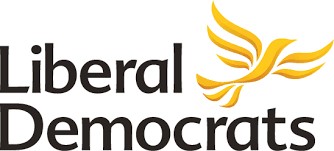RAINBOW PARLIAMENT
By Maanav Patel
The government has lost its jurisdiction, parties are splitting into factions, factions are forming left-right alliances. Backbenchers are grabbing the limelight while frontbenchers are hiding from embarrassment and new parties are emerging and dominating. Are we experiencing a collapse in the British party system as we know it?
Two parties have dominated British politics for well over a century and together they have won over 60% of votes in every general election since 1922. However, recently this two-party system is non-existent. Four different parties are polling at around 20% each, as Labour and the Tories jostle with the Liberal Democrats and the new Brexit Party. Furthermore, the alternative Green party has silently gathered 10% of the share. While the next election is not due till 2022, an incoming prime minister stuck with a deadlocked Commons will face pressure to go to the country. Should it occur, the proportional system means seats would be split four ways. But Britain’s first-past-the-post system awards seats only to the winner in each constituency, punishing parties that come a consistent second or third, however narrow the margin. Hence, the next election could provide a range of colours occupying the seats of Parliament.
Labour seem to have failed to capitalise at the Tory’s expense and are on a downwards spiral of their own. Having lost a vote of no confidence against the government—and hence any chance of constructing a general election anytime soon—Jeremy Corbyn will face mounting pressure to call for a second referendum. This will expose deep divisions, particularly within his party: between Remain-supporting middle-classes and the Leave-supporting workers; between Labour’s high command and the bulk of its activists; and between Mr Corbyn, who dislikes the idea of another vote, and his chancellor, John McDonnell, who is more open to it. This is not even to mention the antisemitism scandal that has divided the party and destroyed much of the public’s trust with it.
On the other hand, there is the Liberal Democrats, who recently posted its best-ever European election results, with 16 MEP’s. It seems to have seen off other parties collecting the remain voters, such as Change UK, a challenger to its centrist crown. What differs in their party leadership campaign is that their hustings is marked by agreement, while the Conservative candidates tear strips off each other. Both candidates look to set the Lib Dems as an opposition to the Brexit party with an enthusiastically green agenda. Both served in the coalition government with the Tories in 2010-15. Sir Ed is a bit more experienced whilst Ms Swinson is much better with the media and the public. Whilst they both agree on the destination and route for the party, they just disagree over who should be driving.
One thing is clear in all of this confusion however; anyone that thinks that we can go through the chaos of Brexit and then revert to politics as normal is living in a fantasy.

